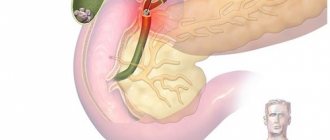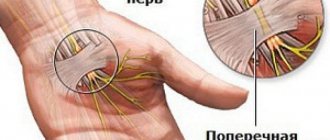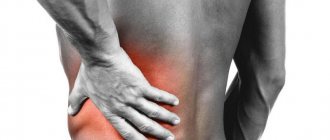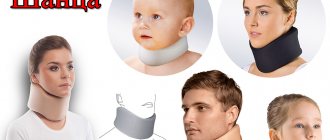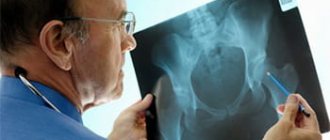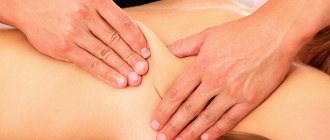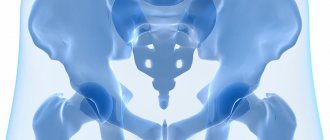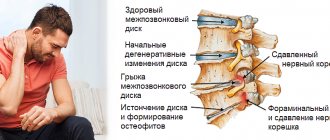Every person on Earth has at least once experienced pain under the left shoulder blade from the back. Pain under the left shoulder blade is a special symptom of the body, which can indicate both diseases of the spine and diseases of such internal organs: heart, stomach, lungs, kidneys.
The most common causes of acute back pain on the left under the shoulder blade are osteochondrosis, stomach ulcer, myocardial infarction, angina pectoris, intercostal neuralgia and muscle strain.
Pain on the left under the scapula can indicate many different diseases.
Pain under the scapula on the left from the back from the back can appear when moving, turning, breathing, radiating to the thoracic region, to the arm.
By nature and intensity, the pain sensation can be strong, aching, dull, sharp, pulling, stabbing, cutting, pressing, burning, shooting and pulsating. A doctor alone will not be able to accurately determine why there is pain under the shoulder blade on the left side based on just one pain symptom.
If the patient is not yet ready to see a doctor for diagnosis and prescribing a course of treatment, then you can try to determine for yourself by specific symptoms what hurts under the left shoulder blade. This will help you avoid unnecessary examinations and procedures.
We will tell you in detail about all the causes of pain under the left shoulder blade from the back, how to accurately identify the disease, how to treat it and who to contact. I promise it will be interesting.
Causes
The left shoulder blade is a bone in the back that attaches to the ribs. What is located on the left under the shoulder blade? This bony plate, along with the left side of the rib cage, protects internal organs such as the lung, heart, stomach, spleen, pancreas and aorta.
On the left, under the shoulder blade, there are important organs such as the heart and lung.
Not far from the shoulder blade in the center of the back is the spine. Inside it is the spinal cord, which is connected through nerves to all organs of the body. It is through the spinal cord that pain impulses are sent from the scapular region to the brain, and the person feels that his left shoulder blade hurts.
Why does my shoulder blade hurt on the left side? All causes of pain symptoms in the left shoulder blade behind can be divided into 2 groups:
- Diseases of the internal organs of the body (heart, blood vessels, stomach, lungs, bronchi, spleen).
- Diseases of the musculoskeletal system (osteochondrosis, intercostal neuralgia, muscle pain).
Let's study in more detail all the possible causes of pain under the scapula on the left side with all the specific features of the course of a particular disease.
A little anatomy
The scapula is a flat triangular bone adjacent to the chest at the back in the area from the 2nd to 7th ribs. Performs binding, protective, strengthening and motor functions.
The scapula connects the girdle of the upper limbs with the arms and sternum. It protects the shoulder joint and protects the lungs and aorta from mechanical stress. Certain muscles extending from the shoulder blades are designed to strengthen and support the shoulder joints. Thanks to these parts of the skeleton, mobility of the shoulder girdle is ensured; their functions extend even to the lower limbs. The bone is equipped with nerve roots emanating from the cervicothoracic region.
Gastrointestinal tract
Peptic ulcer
Many people mistakenly believe that the main cause of pain on the left side under the scapula is a heart attack. But that's not true. According to statistics, this symptom most often appears due to a stomach ulcer.
Peptic ulcer disease is a common cause of dull pain under the shoulder blade on the left side
Specific manifestations of peptic ulcer disease:
- Dull and dull pain under the left shoulder blade, accompanied by burning or itching, occurring mainly in the evening or at night. The pain may move to the left nipple and thoracic spine.
- Severe cutting pain in the stomach appears before or after eating food, as well as foods that irritate the gastrointestinal mucosa (spicy, fatty foods). The pain can be hungry, night, or morning. As a rule, after eating food, stomach pain subsides.
- Pain in the left side under the shoulder blade, the so-called “dagger” pain. This may indicate that the ulcer has eroded the wall of the stomach and leaked into the abdominal cavity (perforation of the ulcer). A person presses his bent knees to his stomach and clasps them with his hands, cold sweat breaks out, blood pressure drops, heart rate changes, and lumps of blood appear in the vomit. In this case, you need to urgently call an ambulance.
With a stomach ulcer, the patient tries to take an anti-pain position - The pain is relieved by vomiting or taking acid-reducing medications such as Rennie or Almagel. There is a pulling sensation in the stomach area.
- Heartburn and belching. This is a direct sign indicating a stomach ulcer.
- Pain under the shoulder blade on the left and in the chest. This causes tension in the muscles and difficulty breathing.
A stomach disease that causes paroxysmal pain in the area of the left shoulder blade is always accompanied by vomiting, belching, heartburn, problems with digesting food, and bloating.
Pancreatitis
Pancreatitis is a disease in which the pancreas becomes inflamed. The enzymes that this organ secretes do not exit into the duodenum, but begin to destroy the pancreas itself. This is very dangerous because these enzymes can enter the general bloodstream, which can harm the brain, heart, liver, kidneys and lungs.
Pancreatitis in the acute phase can lead to serious consequences
In acute pancreatitis, girdle pain appears . In this case, it often hurts under the left shoulder blade. Mostly, pain symptoms occur in attacks after eating salty, fatty or fried foods in large quantities. Additionally, vomiting, nausea, flatulence, and diarrhea may occur. Vomiting does not bring relief.
A girdling pain appears in the stomach area, moving to the left side of the body: the heart area, chest and under the left shoulder blade.
If sudden, sharp, impulsive pain appears, you should contact a gastroenterologist as soon as possible.
The cardiovascular system
Coronary heart disease includes 2 pathologies: myocardial infarction and angina. These heart pathologies often lead to pain on the left side under the shoulder blade.
Myocardial infarction
One of the first causes of pain under the shoulder blade on the left side is myocardial infarction. This serious symptom can threaten the patient's life.
During a heart attack, a pain symptom appears under the left shoulder blade and in the area of the heart, usually in paroxysms. The left arm and left shoulder blade often hurt.
Without emergency medical care, myocardial infarction can lead to the death of the patient. Urgent hospitalization is required!
What happens in the heart during myocardial infarction.
Specific features of myocardial infarction :
- Sharp and stabbing pain under the shoulder blade on the left side of a pulsating nature.
- My neck and jaw hurt on the left side.
- A tablet of Nitroglycerin, Validol or anesthetic does not have a positive effect.
- Numbness of the hands and wrists, occurring simultaneously with chest pain, radiating under the left shoulder blade.
- Pain under the shoulder blade on the left side in the morning or during sleep.
- The pain seems to squeeze and press on the heart.
- The person experiences very strong fear.
- The duration of the attack is more than 15-30 minutes up to 2-3 hours.
- A burning sensation appears in the patient's chest; he cannot breathe deeply.
- An attack often appears after intense physical exertion or a nervous breakdown, as well as at rest.
Important point! With heart disease and cervical osteochondrosis, numbness of the tongue appears in the left region. Therefore, diagnostics are required to identify the exact cause of the pain.
Angina pectoris
Angina pectoris is one of the manifestations of coronary heart disease, in which pain occurs in the back under the left shoulder blade. Initially, pain appears in the chest area and over time flows to the left side of the chest.
What happens in the heart during angina pectoris
Specific features of angina:
- Sharp pain squeezing the chest. Symptoms disappear in a calm state or after taking Nitroglycerin tablets. Validol helps less with angina.
- An attack of pain under the shoulder blade on the left side with angina appears after hypothermia, alcohol, severe stress or high physical activity.
- The painful sensation above the left shoulder blade from the back is complemented by pressing pain under the left rib, which can move to the left side of the jaw.
- In a calm state, the attack does not appear.
- The pain syndrome may intensify with movement.
- The attack lasts no more than 10-15 minutes.
Pericarditis
This disease is manifested by inflammation of the pericardial sac due to an infectious disease or post-infarction condition of the patient.
Be sure to read: TOP 30 exercises for pain in the shoulder blades: how to quickly remove pain with the help of gymnastics
The difference between a healthy heart and a sick one
With pericarditis, back pain on the left in the area of the shoulder blades is not as pronounced as with myocardial infarction or angina. Painful symptoms appear in the front of the heart, and then they move under the scapula.
The pain is sharp, which decreases when bending forward or at rest. The attack may be accompanied by an increase in body temperature and a feeling of chills.
Hypertensive crisis
This disease is accompanied by pressing and aching pain under the left shoulder blade, which moves from the chest area. When you are sick, your blood pressure is critically high.
Additional symptoms of a hypertensive crisis:
- Acute pain syndrome in the chest.
- Cramps.
- Fainting.
- Strong headache.
- It hurts under my left shoulder blade and I feel nauseous.
- Severely increased blood pressure.
Aortic aneurysm
With this irreversible disease, the artery greatly expands due to its weak walls. An aneurysm of the descending aorta is accompanied by throbbing pain under the left shoulder blade. In this condition, the heart cannot cope with the load, which leads to stagnation of blood in the lungs and the appearance of edema.
Difference between a normal aorta and an aortic aneurysm
Additional signs of aortic aneurysm:
- The appearance of pain in the left hand.
- Pain in the back and chest and jaw. The pain is shooting and sharp.
- Pain from the shoulder blade to the left neck.
- Breathing problems, cough, shortness of breath, hoarse voice.
Treatment methods
To eliminate pain and numbness, therapy must begin with establishing a treatment regimen for the cause that triggered the symptom mechanism. However, additional methods for numbness can be used. Most often, folk remedies are used after discussing them with your doctor:
- Baths with contrasting water. You can take a contrast shower by directing cold water to the area of the shoulder blades for 30-40 seconds, then hot water for 60-100 seconds. The time is gradually increased, and the procedure is carried out for 10 days in a row before bedtime, followed by a break. After a bath or shower, you can apply a warming ointment to the area.
- Tea from medicinal clover. The plant is brewed as follows: 250 ml of boiling water 1 tsp. herbs, leave for 15 minutes. You need to drink 2 cups a day.
- Ointment with eucalyptus. Make an ointment from camphor oil and 10 drops of eucalyptus ether. Apply before bedtime.
- For hand sensitivity. Take 150 g of garlic, chop it, pour in 0.5 liters of vodka and leave for 2 weeks, shaking once a day. Take 5 drops orally, straining. Treat for 4 weeks by mixing the infusion with clean water.
Also, if there is numbness, you can massage using a product of 10 ml of camphor and 50 ml of ammonia, diluted in 1 liter of water.
There are other useful recipes for restoring sensitivity to the hands with numbness moving from the shoulder blades:
- Prepare a paste from fresh pumpkin, bake it and apply it to the numb area, wrap it in a warm cloth and keep it for up to 3 hours.
- Tincture with vodka and cucumber - mix pickled chopped cucumber with 3 pods of hot pepper and pour in 0.5 liters of vodka, leave for 7 days, then use to rub the problem area.
- An infusion for massage is prepared from 300 g of sugar, 100 ml of vegetable oil, then lubricate the problem area, prepare 1 liter of water with 2 tbsp. l. salt and place the numb hand there for 40 minutes.
Medicines for numbness do not always help; they are prescribed only in combination with each other. Painkillers and muscle relaxants can be used if there are severe symptoms.
Respiratory system
Pain under the left shoulder blade when inhaling, exhaling, coughing, sneezing may indicate the beginning of the development of:
- left-sided pneumonia (pneumonia);
- acute bronchitis;
- dry pleurisy;
- lung abscess.
After a cold, there may be pain in the left shoulder blade after suffering from bronchitis or pneumonia. Let's look at the most common diseases that can cause pain in the area of the left shoulder blade.
Pneumonia
When pneumonia occurs, the following specific symptoms appear:
- Reducing pain in a supine position, as well as turning the body to the right or left.
- Wet or dry cough, with pain under the shoulder blade on the left side.
- Increased body temperature for a long time within 37-38°C. Low-grade fever is preceded by its increase to 40°C for several days.
- The appearance of a feeling of lack of air, shortness of breath.
- Increased pain when breathing.
- There may be pus or blood in the sputum.
- The pain symptom is localized in the affected lung. The nature of the pain is aching of moderate strength.
- With pneumonia, the point under the left shoulder blade hurts.
What happens in the lungs during pneumonia
Important! If there is pain between the shoulder blade and the spine on the left due to cancerous tumors, then this will only be accompanied by a cough and difficulty breathing.
Pleurisy of the lungs
As a rule, pain in lung diseases indicates pleurisy, in which the pleural layers become inflamed.
The difference between healthy lungs and pleurisy
How does this disease manifest itself?
- Mild pain and tingling in the area of the left shoulder blade.
- The pain radiates to the left shoulder blade when taking a deep breath.
- Piercing or cutting pain when breathing under the left shoulder blade. This is the main difference between pleurisy and pneumonia.
- With pleurisy, a painful sensation appears under the left shoulder blade and it hurts to breathe.
Why does it hurt under the left shoulder blade with pleurisy? The pain symptom intensifies with the depth of the patient's breathing.
To identify any pulmonary disease, you must take an x-ray, even if your doctor has not given you a referral for one.
Types of pain
The following types of pain exist:
- reflected. It can be aching, deep, burning or dull, and is often combined with other symptoms. This type of pain is caused by diseases of the internal organs;
- somatic. It can be diffuse in nature, can be acute, aching, dull and responds adequately to the use of analgesics. Occurs in or near the affected area. The cause is diseases of the spine, bones, tendons;
- irradiating. The pain is acute, intense, accompanied by motor disturbances and does not respond to analgesics. This type of pain syndrome occurs as a result of disturbances in the functioning of the nervous system;
- dysfunctional. Pain sensations can occur in different places, as a result of malfunctions of the central nervous system, namely the areas responsible for susceptibility.
The nature of the pain can be: sharp, dull, pulling, burning, aching. In the chronic form of the disease, pain syndrome can be observed for a long period with moments of exacerbation and remission.
Musculoskeletal system
Cervical and thoracic osteochondrosis
Osteochondrosis is one of the reasons for aching, pinching or aching under the left shoulder blade. The discomfort becomes stronger when you move your neck and head. One of the characteristic signs of cervical osteochondrosis is that the left shoulder blade hurts and radiates into the arm. This occurs due to pinching of the nerve roots in the spinal cord by bone growths on the vertebrae - osteophytes (radicular syndrome).
What do vertebrae look like with osteochondrosis?
Additional symptoms of cervical osteochondrosis:
- Numbness of the hands, down to the phalanges of the fingers.
- Headache.
- Pain in the occipital region.
- Flashing "flies" before the eyes.
- Dizziness.
- High blood pressure.
- Pulling under the left shoulder blade.
- The pain goes away after warming up.
- The pain symptom can be either constant (but tolerable) or shooting under the left shoulder blade and neck.
- Increased symptoms of osteochondrosis after sleep, prolonged static posture, and strong physical activity.
Important! How to distinguish osteochondrosis from angina pectoris? With angina pectoris, the pain symptom lasts no more than half an hour, and with osteochondrosis, it lasts 2-3 days. An attack of angina pectoris is relieved with Nitroglycerin tablets, and osteochondrosis is relieved with any analgesics.
In the initial stage of osteochondrosis, the pain symptom is localized in the area of pinched nerve roots. As the disease progresses, the nerve endings and blood vessels in the neck begin to become pinched, which leads to severe headaches.
A distinctive feature of osteochondrosis is a crunch in the cervical and thoracic region when moving the body, constant tension in the neck and shoulder muscles, and a feeling of a “driven stake” in the spinal column.
Good article to follow up:
Why does your back hurt in the shoulder blades and neck after sleep: 15 reasons and 20 treatment methods
Intervertebral hernia of the thoracic region
Osteochondrosis or protrusion leads to a hernia of the spine. The fibrous ring in the intervertebral disc ruptures and the nucleus pulposus is squeezed into the spinal space, which causes acute pain.
What does an intervertebral hernia look like?
With this pathology, it pulsates under the shoulder blade on the left side of the back, sometimes it appears suddenly. “Spread” pain over the left shoulder blade intensifies with movement.
Painful sensation accompanies:
- Headache.
- Blood pressure surges.
- Numbness of the upper extremities.
Intercostal neuralgia
Intercostal neuralgia is a manifestation of osteochondrosis, in which compression or inflammation of the intercostal nerves occurs. This disease is also called thoracalgia.
If the patient experiences lumbago, severe girdling pain under the left shoulder blade and throughout the entire area of the ribs, then this may be a sign of intercostal neuralgia.
What is intercostal neuralgia
Distinctive symptoms of the disease:
- Sharp, shooting pain that can radiate to the heart, back, lumbosacral region, left or right shoulder blade.
- In severe cases of the disease, a burning sensation appears under the left or right shoulder blade (as if this place is “burning”).
- The patient's mobility is severely limited; he has difficulty turning his body.
- Back muscle tension.
- Increased heart rate.
- Pain under the left shoulder blade when coughing, taking a deep breath, or bending the body.
- Symptoms disappear in a calm state or after warming up.
- When palpating the affected area, the pain intensifies.
The difference between intercostal neuralgia and heart attacks is that with neuralgia there is a feeling of pins and needles running over the affected area. And with a heart attack or angina pectoris, a numb pain sensation appears in the area of the scapula.
Scapular-costal syndrome
Scapular-rib syndrome is an overload of physical work, injury or hypothermia of the scapula muscle. This syndrome is manifested by constant aching pain under and above the left shoulder blade, as well as in the shoulder girdle.
A notable sign of the disease is a crunching sound when moving the arms and shoulders. The pain symptom intensifies with hypothermia of the upper body.
Radiculopathy
This disease is characterized by compression of the nerve roots in the spinal cord. The main symptom is a sudden shooting pain that feels like a piercing. At the same time, numbness appears in the hands.
With radiculopathy, nerve endings are compressed
The pain can radiate to the heart and stomach, so it is important to consult a specialist to accurately diagnose this disease.
Humeroscapular periarthritis
Humeral periarthritis is a disease in which the shoulder area becomes severely inflamed. Symptoms of periarthritis appear only when moving. With exacerbation of periarthritis, the pain intensifies at night.
What does glenohumeral periarthritis look like?
Features of the disease:
- Pain symptom in the left arm and left area of the body.
- Severe pain under the left shoulder blade when moving.
- Restriction and pain when moving the body and shoulder joint.
- Increased body temperature.
- Severe muscle spasm.
Injuries
With a direct blow to the scapular area or a fall from a height onto the back, pain often occurs in the back left under the scapula. Moreover, in the first 2-3 hours the pain syndrome is very strong. Later the pain becomes aching. After some time, edema and swelling appear in the affected area, and the pain becomes stronger with movement.
Be sure to read: EVERYTHING about lumbago: what it is, symptoms, causes, treatment for lumbago at home
Mild pain on the left under the shoulder blade may appear again after 2-3 weeks with high physical activity or hypothermia.
If a fracture or fissure is suspected, an x-ray should be taken.
Myositis
Myositis is an inflammation of the back muscles, leading to a cutting pain under the left shoulder blade. Symptoms intensify when the body is tilted to the right. After warming up the affected area, the discomfort under the left shoulder blade decreases.
Myositis
Additionally, muscle pain is accompanied by stiffness of movement and tension in the muscles of certain areas of the back.
Therapy
It is not so easy to cure osteochondrosis, especially in elderly patients. But it is quite possible to alleviate the general condition with the help of physiotherapeutic procedures.
A simple massage will help relieve muscle spasms. From gymnastics you can do the following exercises to develop flexibility:
- Circular movements of the shoulders;
- Raising your arms at shoulder level in different directions;
- You can clasp your hands, alternately changing position;
- Wrapping your arms around your chest, you need to try to spread your shoulder blades to the maximum.
In everyday life and in the workplace (if the work involves forced long-term sitting in one state), comfortable conditions should be created; the muscles of the neck and thoracic spine should not be in constant tension; posture should be kept straight. During breaks, it is advisable to perform several exercises.
To prevent osteochondrosis from causing trouble, it is better to purchase a bed and.
Denial of responsibility
The information in the articles is for general information purposes only and should not be used for self-diagnosis of health problems or for therapeutic purposes. This article is not a substitute for medical advice from a doctor (neurologist, therapist). Please consult your doctor first to know the exact cause of your health problem.
I will be very grateful to you if you click on one of the buttons and share this material with your friends
A fairly common disease is scapular osteochondrosis, the symptoms and treatment of which you need to know. It is characterized by a violation of the structure of connective tissue.
Psychosomatic diseases
How are psychosomatics and pain pulling under the left shoulder blade related? Psychosomatic illnesses appear due to severe stress or emotional stress. The body is unable to cope on its own and it begins to signal the person through psychosomatic pain.
Be sure to read this good article:
Pain between the shoulder blades: psychosomatics of pain, causes in women and men, how to cope
Psychosomatic diseases can cause pain in any part of the body
In addition to pain, additional symptoms appear:
- Feeling of heat, squeezing, burning and heaviness in the sternum.
- Spasms and lump in the throat,
- Feeling of lack of air.
- Severe anxiety, trembling in the body.
- High body temperature.
- Pain sensations can be both dull and very sharp, occurring here and there: under the collarbone, in the arm, neck, abdomen.
Vegetative crisis
A vegetative crisis is the first sign of a neurological disease in a patient. A person develops severe pain under the left shoulder blade after severe nervous experiences and stress. Most often, vegetative crises occur in children, adolescents and women over 30 years of age .
Vegetative crisis can provoke severe stress
The symptoms of this disease are similar to a heart attack or angina. Additionally, there is a pressing pain on the left under the shoulder blade with a feeling of heaviness. The pain radiates (moves) to the sternum, left shoulder, forearm, neck, left jaw area, and also between the shoulder blades. But, as a rule, patients cannot indicate the exact location of the pain.
One of the common causes of pain under the left shoulder blade in women is a vegetative crisis due to severe nervous tension.
Specific symptoms of vegetative crisis:
- Chills.
- My left shoulder blade hurts and it’s hard to breathe.
- Constriction in the chest.
- Increased sweating.
- Decreased heart rate.
- Feeling of heat in the chest.
- Nervousness.
- Memory problems.
- Panic attack.
- Headache.
- Loss of consciousness.
- Feeling of a lump in the throat.
- Hand tremors.
- Cramps.
An attack can last from 2-3 minutes to 1.5 hours. After taking sedatives or tranquilizers, the symptoms of a vegetative crisis become less severe. In any case, if you have the above symptoms, you should contact a vegetarian or neurologist.
Additional diseases
Why does it hurt under my left shoulder blade? Let us also list diseases of the musculoskeletal system that lead to this symptom.
Osteomyelitis
This is an infectious disease that causes inflammation in the bones and bone marrow. The patient's body temperature rises, symptoms of general intoxication of the body appear (nausea, vomiting, headache, weakness, drowsiness). Additionally, a painful sensation appears in the bone, initially aching, and then bursting.
Subscapularis bursitis
This is inflammation in the subscapularis bursa. It appears suddenly, with swelling appearing and increasing in size. The patient's temperature rises, he cannot raise his arm up, the pain moves to the neck. At night, the pain symptom intensifies.
What does bursitis look like?
Tuberculosis
This is an infectious disease that affects the bronchi of the lungs. The first symptoms of this disease are weakness, fatigue, shortness of breath, constant low body temperature, cough with sputum, heavy sweating, sudden weight loss and chest pain.
Myelopathy
This is a disease in which the spinal cord is damaged. Any disease of the spine can provoke this pathology. Myelopathy is characterized by numbness of the skin in the limbs and any areas of the body, severe pain in the back, including in the area of the left shoulder blade.
Spinal tumor
With this disease, a compaction appears on the scapular region or its metastases in the axillary region. Surgery is required because the tumor is affecting the bone.
Sprengel's disease
This disease is otherwise called pterygoid scapula. This is an innate feature of the body, or acquired as a result of disease. This explains why there is constant pain under the shoulder blade on the left side, especially when raising the arm up. The pain is tingling
Myofascial syndrome
This is a chronic disease in which local compactions appear in the form of pain points. The pain symptom appears during physical activity. Subsequently, the patient experiences pain constantly, including at rest.
Myofascial syndrome
Skeletal destruction
Sometimes, due to osteochondrosis, intervertebral hernia or spondyloarthrosis, the back hurts below the shoulder blade on the left side of the back. In this case, the pain can be either aching, combined with a problem in breathing, or in the form of severe colic under the left shoulder blade.
Biphasic splenic rupture
This disease of the spleen is relatively rare. But if this pathology occurs, the patient experiences bleeding in the abdominal area, which is extremely difficult to stop. Additionally, the person feels discomfort under the left shoulder blade. Urgent surgery is required.
Biphasic splenic rupture
With diseases of the spleen, the left side hurts in the area of the left shoulder blade and ribs
Disc protrusion
Each vertebra is protected by a ring made of elastic connective tissue. With protrusion (when there is a change, complete destruction of cartilage tissue), protrusion of the vertebra occurs without rupture of the connective tissue. The protrusion is compared with a hernia of the spinal column in the initial stage of development. It is small in size and accompanied by pain. The reason for such obvious pathology of the spine is osteochondrosis under the shoulder blades.
Diagnosing protrusion is simple. Get examined with X-rays and MRI. Degenerative conditions of the vertebrae, identified not at an early stage of the disease, are cured using physiological procedures and conservative therapy. The doctor prescribes manual therapy sessions. Surgical operations are used more often.
Table: causes of pain under the left shoulder blade depending on location
| Symptom | Cause |
| Gives to the left shoulder blade when inhaling or breathing |
|
| Pain on the left under the shoulder blade and in the heart area |
|
| Pain under the left shoulder blade and armpit |
|
| Pain syndrome on the left under the shoulder blade, radiating to the arm |
|
| Pain under the left shoulder blade when inhaling |
|
| Pain on the left side under the shoulder blade when turning and moving |
|
| Crunching under the left shoulder blade |
|
| Pain on the left under the shoulder blade during pregnancy or after childbirth |
|
| Pain in left shoulder blade and arm |
|
| Pain in the left hypochondrium, radiating under the shoulder blade |
|
| Pain in the left chest radiating under the shoulder blade |
|
| Left shoulder blade and shoulder hurt |
|
| On the left under the scapula and sternum |
|
| The child has pain under the left shoulder blade |
|
| Pain in the shoulder blade after physical activity, running, training |
|
| Pain under the left shoulder blade when turning the head |
|
| Pain on the left under the shoulder blade after eating |
|
| Pain on the left under the shoulder blade when sneezing |
|
| Painful symptom when swallowing |
|
| Shoulder blade and neck pain on the left side |
|
| Pain above the shoulder blade on the left |
|
| Pain on the left under the shoulder blade, radiating between the ribs |
|
| Pulsates and twitches under the left shoulder blade without pain |
|
Be sure to read: Back pain and dizziness: what it could be, 10 reasons, what to do, treatment
Therapy
In the stage of exacerbation of osteochondrosis, treatment is aimed at relieving pain and relieving the inflammatory process. The most acceptable are non-steroidal drugs that have anti-inflammatory and analgesic effects: Meloxicam, Ketoprofen, Diclofenac. To minimize pain syndromes, blockade with Diprospan is used. The suspension is injected into the area of maximum pain at an angle of 60-90 degrees.
To immobilize the limb, special supporting bandages are used. In parallel with drug treatment, the following is prescribed:
- magnetic therapy;
- laser procedures;
- acupuncture;
- massage;
- manual influence on damaged areas of the spine;
- post-isometric relaxation to reduce pain.
Gymnastic exercises
How to treat osteochondrosis when the exacerbation is stopped? An effective remedy is special exercises aimed at strengthening the muscles of the spinal column.
Properly selected gymnastics has many positive effects:
- forms correct posture;
- restores flexibility and mobility to the vertebrae;
- eliminates pain;
- relieves muscle tension;
- improves blood microcirculation;
- improves metabolic processes;
- eliminates pinched blood vessels.
httpv://www.youtube.com/watch?v=embed/tY_sS673bgs
Before starting exercises, it is necessary to warm up the problem area. Water procedures and warming ointments are suitable for this. Gymnastics is performed with smooth movements without sharp turns and jerks.
For thoracic osteochondrosis, the following exercises are recommended:
- In a standing position. Place your feet shoulder-width apart and place your hands on your waist. Bend as far as possible to the side, forward and backward without bending your knees.
- Sit on a chair with your feet flat on the floor. As you inhale, squeeze your shoulder blades together, as you exhale, spread them apart.
- Sit on the floor, straighten your legs in front of you. Turn your torso to the right as much as possible, then to the left, simulating twisting.
- Get on all fours. Arch your back and stay in this state for 5-7 seconds. Round it, imitating a cat stretching. Fix your back for 2-3 seconds.
Repeat all exercises 5-10 times.
After a set of gymnastic procedures, stretch your spine. To do this, sit on a chair and bend down as much as possible, feeling how the vertebrae begin to stretch under the weight. Slowly straighten up and lean back.
ethnoscience
Alternative treatment can be combined with drug therapy. An effective remedy is considered to be an ointment made from cinquefoil with the addition of lard, which can be prepared at home:
- Grind a tablespoon of dry herb.
- Add 30 grams of rendered fat.
- Stir.
- Rub the ointment onto the inflamed area, cover with cling film and wrap with a woolen scarf.
Folk remedies include vinegar and onion compresses, poultices with burdock root, lotions with horseradish and vodka tincture.
Treatment is not complete without healing baths with spruce or juniper cones. To do this, 500 g of raw material is brewed with 3 liters of boiling water and infused for 1-2 hours. The resulting decoction is added to water. The bath is taken for half an hour. Treatment and prevention of scapular osteochondrosis is carried out comprehensively. The earlier the disease is diagnosed, the easier it is to cope with the pathology without any complications. It is necessary to listen sensitively to your body and, when the first symptoms appear, undergo a diagnosis from a qualified specialist.
We also recommend reading:
▲
Table: causes by nature of pain
| Type of pain | Cause |
| Aching |
|
| Dumb |
|
| Strong |
|
| Sharp |
|
| Stabbing |
|
| Sharp, burning |
|
| Constant, chronic |
|
| Pressing |
|
| Pulsating |
|
| Shooting |
|
| Periodic |
|
| Sudden |
|
| Pulling |
|
| Burning under the shoulder blade |
|
| Pain under the left shoulder blade and shortness of breath |
|
| Cough and pain under the left shoulder blade |
|
| Pain on the left under the shoulder blade and temperature |
|
| Pain under the left shoulder blade and numbness in the left arm |
|
| Pain on the left under the shoulder blade and nausea |
|
| Numbness of the tongue and pain under the left shoulder blade |
|
| Pain on the left under the shoulder blade and dizziness |
|
| The point on the left under the shoulder blade hurts |
|
Hernia
Osteochondrosis of the left scapula can provoke the formation of a herniated disc. It is considered a complex, dangerous complication of the disease.
When a hernia occurs, the protective tissues of the intervertebral discs are completely destroyed. The protrusion occurs outward, beyond the spine, into the canal with the cerebrospinal fluid. A hernia is dangerous because it completely compresses the spinal roots and compresses the spinal cord. Pain occurs when nerve endings are compressed.
A hernia can be accurately diagnosed using an MRI. Tomography determines the size of the hernia and determines the area of localization.
httpv://www.youtube.com/watch?v=embed/uYuTrOSy8lw
If a herniated disc has formed, it is not recommended to take hot baths, visit a bathhouse, or a sauna. The positive effect obtained after visiting the bathhouse is a deceptive phenomenon; after a while the condition will worsen and the pain will intensify.
How to treat?
Many patients are interested in what to do when it comes under the left shoulder blade. It all depends on the additional symptoms and the nature of the pain. Here are the main treatment methods for pain under the left shoulder blade.
- Burning pain on the left under the shoulder blade, radiating to the arm, which does not appear when breathing or moving, is one of the characteristic symptoms of angina attacks or myocardial infarction. In this case, the patient should be provided with bed rest and take a Nitroglycerin or Validol tablet.
Nitroglycerin only helps with angina pectoris - If the muscle under the left shoulder blade hurts due to injuries, sprains or pinched nerves, then you can take an analgesic: Ketorolac, Nurofen, Nise. The person must be at rest. After some time, the unpleasant pain symptom under the left shoulder blade may go away on its own.
- If there is pain behind the left shoulder blade due to a non-acute gastrointestinal disease, it is better to take an antispasmodic (No-spa) or an acid-reducing drug (Rennie).
- If there is radiating pain in the left shoulder blade and characteristic signs of an attack of an ulcer, pancreatitis, or pericarditis, an ambulance should be called and the patient should be hospitalized immediately.
- For pain under the shoulder blade on the left side resulting from osteochondrosis, intervertebral hernia or other spinal disease with pinched nerve roots and muscle spasm, taking NSAIDs (Diclofenac, Ortofen, Voltaren) together with a muscle relaxant (Mydocalm, Sirdalud) is indicated. According to reviews from doctors and patients, as well as many medical forums, this is the best drug treatment. Provide the patient with rest and an anti-pain position.
Diclofenac helps with diseases of the musculoskeletal system - For chronic persistent pain in the spine, radiating under the left shoulder blade, taking sedatives and sedatives, a course of therapeutic acupressure, and special exercises are indicated.
If there is pain near the shoulder blade on the left side in severe medical cases, only timely medical assistance can save a person’s life. This is especially true for severe, burning pain in the left side of the chest, radiating under the shoulder blade or left side.
Which doctor should I contact?
Depending on the nature of the pain and accompanying symptoms, you need to know which doctor to contact.
- Therapist, pulmonologist. Increasing pain when breathing, coughing, fever, shortness of breath.
The therapist can determine which specialist the patient should be referred to - Emergency doctor . An emergency call to an ambulance is necessary for severe, burning, stabbing, drilling pain on the left under the shoulder blade, radiating to the left arm or left side, as well as a burning sensation behind the sternum. Additionally, pain symptoms may accompany dizziness, fainting, and weakness.
- Neuropathologist . For pain symptoms during physical activity, when the muscle on the left under the shoulder blade hurts.
- Traumatologist . If pain appears some time after a blow to the back.
- Cardiologist . When a burning sensation and pain appears in the left chest, radiating under the left shoulder blade, arm and tongue.
- Gastroenterologist . Stomach pain before or after eating, belching, heartburn.
- Surgeon. He is contacted when:
- suspicion of a tumor in the spine (pain under the left armpit, radiating to the scapula);
- subphrenic abscess (sharp pain combined with elevated body temperature);
- perforation of an ulcer in the stomach.
- Orthopedist . You should contact him when there is pain on the left side under the shoulder blade. The symptom intensifies when raising the arm or increased physical activity.
- Psychologist . If the causes of pain near the shoulder blade on the left side were not discovered as a result of the diagnosis, and also if this symptom is accompanied by nervousness, ostentatious symptoms only “in public,” or other strange symptoms.
If you have any doubts about the reason for the pain symptoms, it is better to consult a therapist. A therapist is a doctor who knows the symptoms of many diseases. He will refer the patient to a more specialized specialist.
Excellent follow-up article : Does your back hurt? 9 doctors to consult for pain in the lower back, shoulder blades and neck
Diagnosis of pain
If the patient has aching pain in the area of the left shoulder blade, then first of all a diagnostic examination is carried out. The main types of research to accurately identify the causes of pain:
- External examination of the patient, palpation, history taking.
- X-ray of the spine in several projections.
X-rays of the spine can help identify many spinal diseases. - Computed tomography (CT) and magnetic resonance imaging (MRI).
- Electrocardiogram (ECG).
- Ultrasound of internal organs.
- Fibrogastroduodenoscopy (FGDS).
- General blood and urine analysis.
- Study of pulse and blood pressure.
Each type of diagnosis is prescribed when a particular disease is suspected. Subsequently, an accurate diagnosis is made and a course of treatment is prescribed.
Let's summarize. Pain under the left shoulder blade from the back can be caused by many diseases: myocardial infarction, angina pectoris, cervical and thoracic osteochondrosis of the spine, pneumonia, stomach ulcer. With these diseases, acute pain can radiate to the arm, heart, side, or left side of the body.
Depending on the nature of the pain and additional signs, you can identify one or another pathology and contact a doctor who can prescribe the correct treatment.
It is very important to determine the cause of pain in the left shoulder blade, especially if the symptom appears during breathing and movement. Otherwise, this can lead to serious consequences, including death.
